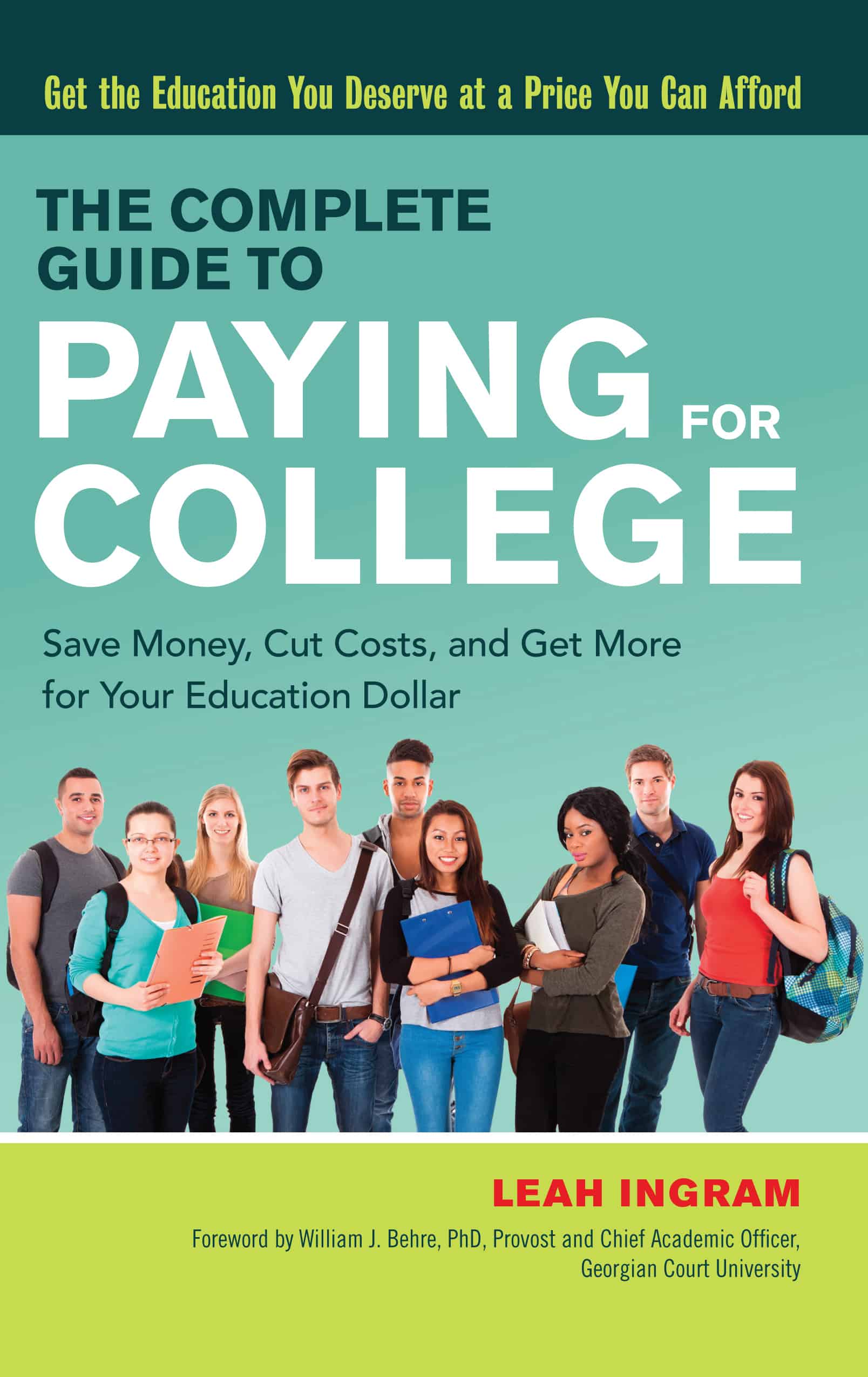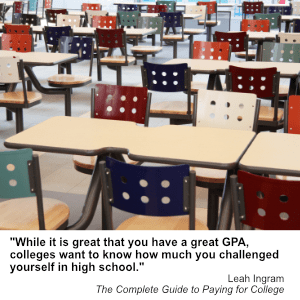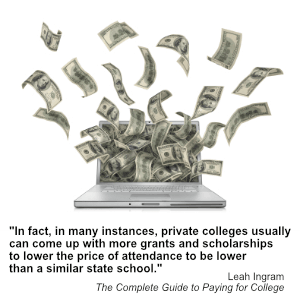Paying For College: Mistakes, Misconceptions and Misunderstandings
In the introduction to my new book The Complete Guide to Paying for College, I explain my reasoning for wanting to write this book. Basically, it came down to this: when our daughters were first born, my husband and did the “crazy college math” that many new parents likely do. That is, with some quick calculations, we realized that by the time our daughters turned 18, college was going to cost a quarter of a million dollars for four years of private college for each child. Even a state college education wouldn't be a bargain–easily clocking in north of $100,000.
We did what most parents also did at that time–set up 529 college savings accounts for our children. But just a few years later, we realized that we were facing a double-edged sword when it came to saving for college.
We were never going to be able to put away enough money to pay for college. Because of our career choices–him in education, me a writer–we were never going to be able to earn enough to fully seed those 529 accounts. In order to put away enough to pay for private college (the kind of college my husband and I attended), in reality we needed to save $1,100 per month per child starting the month that child was born.
Instead of covering what would be 100 percent of tuition in our monthly savings, we continued to send a reasonable amount to those 529 accounts so that we could cover some of their future college costs. Fast forward 18 years and the amount saved was enough to cover a few semesters of books for each child, but that was it.
After giving up on the dream of saving for a college education, we decided to put a different plan in place. It was our goal to find a way to pay for college using more reasonable strategies that made sense for a middle-class family like ours. That strategic thinking is what gave me the idea to write this book.
Even though I had a clear goal in mind when writing The Complete Guide to Paying for College, I did find surprising things along the way. For example, as I began interviewing admissions experts at college, I kept hearing about mistakes students make and misconceptions that parents have when it came to financial aid. I also learned about misunderstandings about how private college works versus public universities. It was really eye opening.
So what were those mistakes, misconceptions and misunderstandings that surprised me as I wrote the book? Here are three to consider.
1. Students don't understand the importance of the classes they take in high school.
According to admissions experts, colleges are looking for students who take the most rigorous course schedule as possible. They want to see that a student has taken the most challenging curriculum available in that high school–even if it means you don't have 4.0 GPA. In fact, if you are applying to a competitive school with a 4.0 GPA but with no AP or honors courses, and your high school offers these courses, your transcript will raise some skeptical eyebrows.
While it is great that you have a great GPA, colleges want to know how much you challenged yourself in high school. And if you didn't at all, that will not reflect positively on you when it comes time for admissions and, more importantly, merit aid (aka scholarships).
2. Parents don't know how to apply for financial aid.
One of the most important first steps in applying for financial aid is filling out the FAFSA. That stands for the Free Application for Federal Student Aid. Even though it has the word “federal” in there, it is a tool that nearly every American college and university uses to determine a family's need–i.e. how much they can afford to pay for college. In addition, some schools use the FAFSA when considering merit aid. That's financial aid based on a student's good grades, extracurricular activities and community involvement.
Too many parents believe they earn too much money to qualify for financial aid, so here's what they do: they don't fill out the FAFSA. I can't tell you how many parents I interviewed whose rationale was that if the school doesn't know how much they earn, then, they believed, they will qualify for more financial aid. Unfortunately, that logic doesn't work in the financial aid world. It never hurts to fill out the FAFSA and it can only help.
Another misunderstanding about financial aid–that it is a one-and-done kind of thing. Wrong. You have to apply for financial aid, including the FAFSA, every year that your child is in school. Every. Single. Year.
Some schools require a second online form called the CSS Profile. And one of the colleges my daughter attends requires a third financial aid form–its own. Again, I must fill these out each year my daughter is in school. Miss a deadline and you can kiss any money goodbye.
3. Many families believe it is cheaper to attend a state school.
When you are trying to do an apples-to-apples comparison costs, it's easy to assume that state colleges and universities are always cheaper than private ones. Sure, the going published price usually shows this to be true. But here's what you really need to consider–what will be your final cost of attendance be?
It's like buying a car. You can look at two completely different cars from two different manufacturers, and you might assume that Car A is more expensive than Car B to drive off the lot. But until you know what kind of incentives Car B's manufacturer is offering, you can't make a final decision about the real cost of buying Car A versus Car B.
The same happens with colleges. Until you know what kind of financial aid you can get from public versus privates, you cannot say that one is cheaper than the other. In fact, in many instances, private colleges usually can come up with more grants and scholarships (which you don't have to pay back) to lower the price of attendance to be lower than a similar state school.
I hope that you've found this information about paying for college enlightening. And that you can become a smarter consumer and more confident spender once it comes time for you to send your own children to college.
Leah Ingram's is a money-saving expert who has shared her unique personal finance approach and advice about getting the most bang for your buck on local and national TV, including The Weather Channel, Good Morning America and ABC News Now. Leah has written 14 books, including Suddenly Frugal: How to Live Happier and Healthier for Less and Toss, Keep, Sell! Her 15th book is The Complete Guide to Paying for College. For more about Leah, subscribe to her money-saving blog, or “Like” her page The Confident Spender on Facebook. Also, check out Leah's newest venture — Puppieware by Pawsome Doggie, selling dog-themed bakeware and cake pans, and unique gifts for dog lovers!









We used the strategies from”College Out of the Box” to help my son get his accredited bachelor’s degree. He was able to get his degree in less time, and for only about $3,000 thousand dollars and with NO student debt. It may be another option for people to check into!
Renee, thanks for the great advice! That is a HUGE savings!